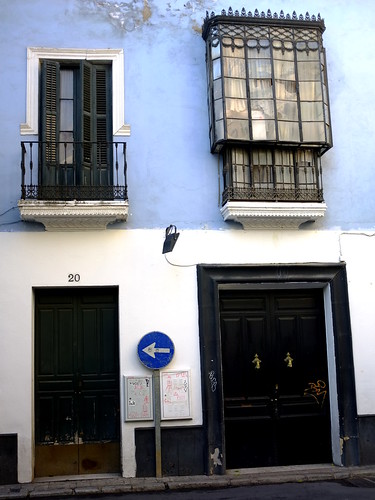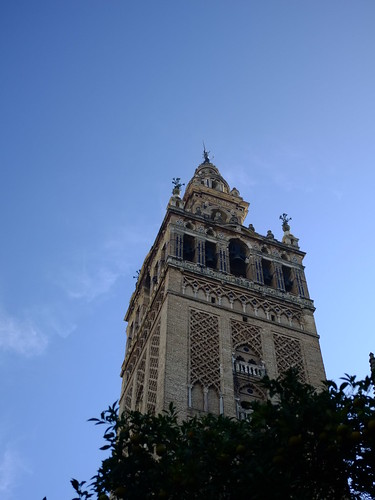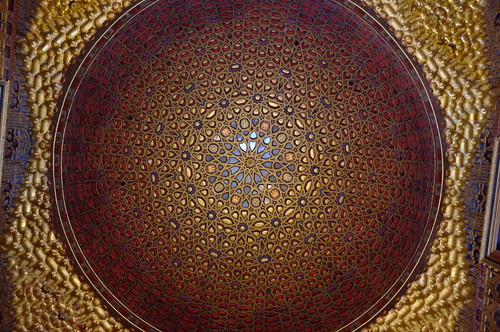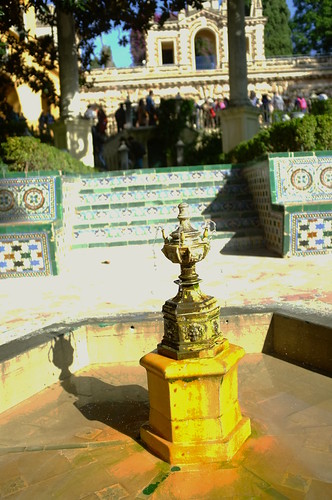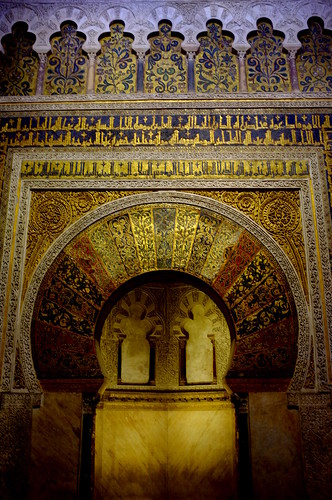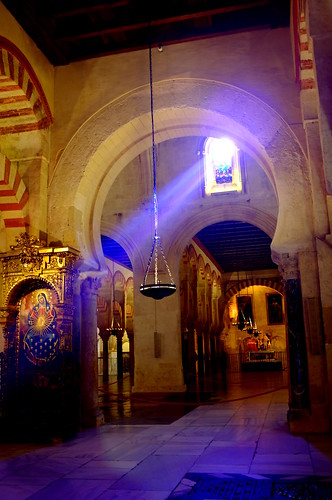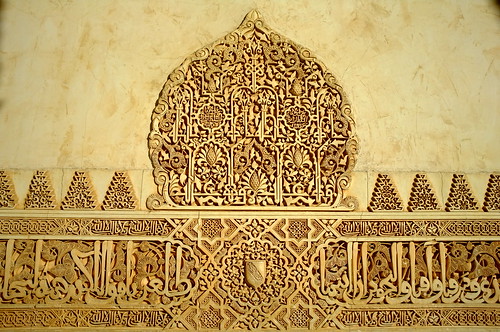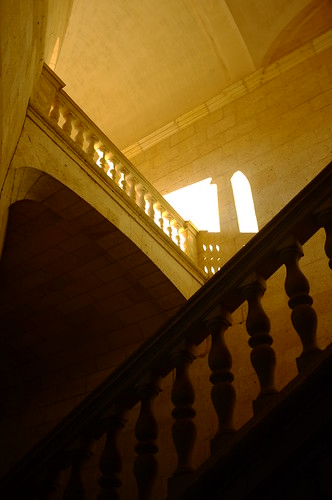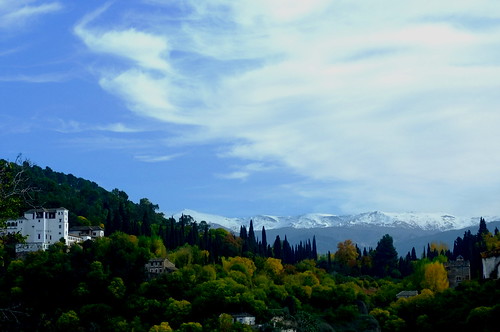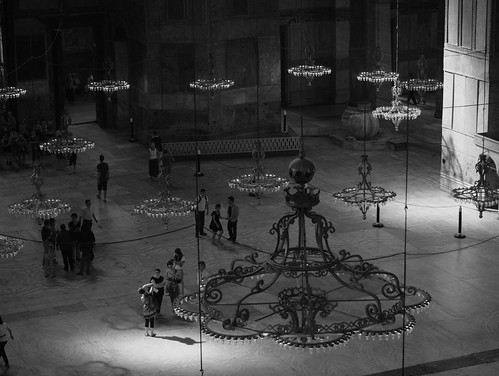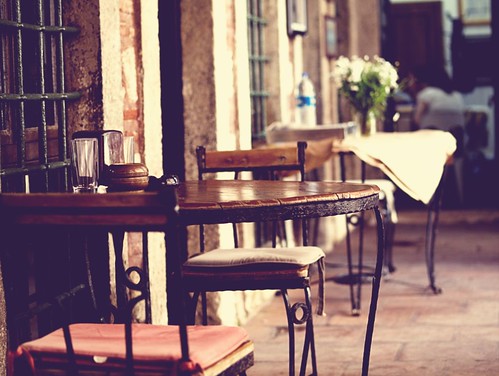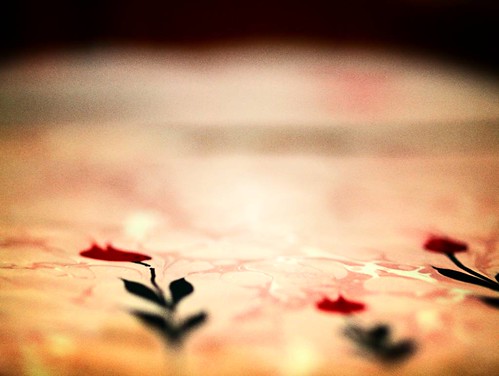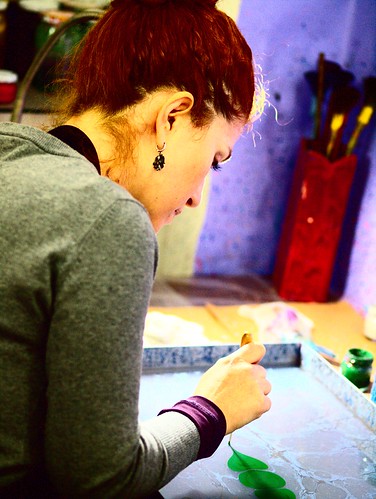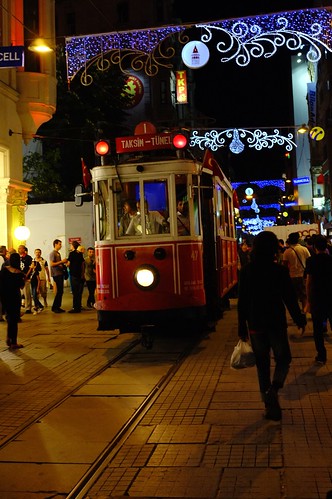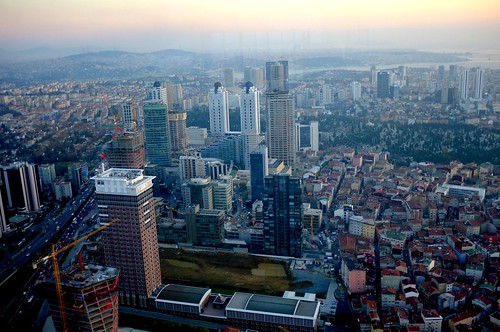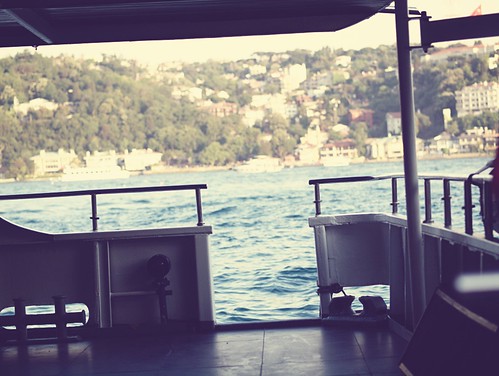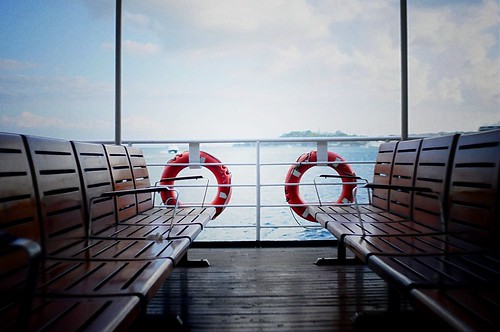İlk kez Ryanair ile uçacaktım. Ucuz havayolu olmasının avantajı belki de buydu, uçakta kasıntı, burnu havada insanlar değil, öğrenciler ve paradan daha değerli şeylerin olduğunu bilen birçok insan vardı. Yan koltukta oturan İspanyol kızla anlaşmaya çalışırken Endülüs hakkında çok da bir şey bilmediğimi anladım. Kızın memleketi Cadiz ('kadif' gibi okunuyor, sondaki z için dilinizi üst damağınıza yapıştırın ama dudaklarınız açık kalsın :)) bile bana bir şey ifade etmiyordu. Vişne'nin yazısını okumuştum bir ara ama işte hafızam beni yarı yolda bırakmıştı.
Konu bir şekilde Tarifa ve Tanca şehirlerine geldi. Ve ben yıllar önce orta sonda okuduğum romanı hatırladım: Simyacı. Romandaki çoban Endülüs'teki memleketinden yola çıkıp Kuzey Afrika'yı tamamen geçiyor ve aynen bizim seyahatlerimizde olduğu gibi, başladığı yere geri dönüyordu. Endülüs'te Arap ve İslam etkisini bulacağımı biliyordum ama bu kadar etkileneceğimi ben bile tahmin edememiştim.
Sevilla
Kasım ortasında Sevilla'ya indik ama hava ve insanlar sıcacık karşıladı bizi. Ne de olsa biz de Akdenizli'yiz dedik ve harikulade sokaklarını arşınlamaya başladık.
Sevilla'da eski şehirde sokaklar dar, evler birbirine çok yakın. İnsanların sıcaklığı evlerine de yansımış neredeyse. Özellikle Kuzey Avrupa'dan sonra hemen anlaşılıyor bu farklar.
Yukarıdaki fotoğrafta bulunan sokak işaretini arkadaşım pek sevmedi ama bence otantik bir hava kattı fotoğrafa :)
Endülüs olunca tabi her yerde Arap ve İslam etkisini hissediyorsun. Büyük şehirlerdeki ana katedraller camiden çevrilmişler ve bazıları halen "mezquita" (İspanyolca'ya Arapça mescit kelimesinden geçmiş) yani cami olarak biliniyorlar. Giralda, Sevilla'daki ana caminin minaresiymiş, daha sonradan eklemeler yapılmış.
Katedral ve Giralda'dan sonra gideceğimiz diğer şehirlerde de bulacağımız Alcazar denilen saraya girdik. İsim olarak Arapça El-Kasr'dan geliyor. Muhteşem bahçeleri ve işlemeli odalarına bayıldık. Yukarıdaki fotoğraf elçileri ağırladıkları Hall of Ambassadors odasındaki kubbenin işlemeleri. Burada ağırlanan elçilerin herhalde baya etkilendiklerini söylemeye gerek yok.
Tüm İspanya yarım adasını işgale gelen Araplar çölleri ve Akdeniz'i aşarak gelmişlerdi. Söylenceye göre kölelikten komutanlığa yükselen Tarık bin Ziyad gemilerle İspanya'ya geldikten hemen sonra askerlerin geri dönme umudu kalmasın diye gemileri yaktırmıştı (böylece "gemileri yakmak" deyimini de dünya dillerine armağan etmiş oldu, yine Cebel-i Tarık Boğazı da ismini bu komutandan almakta - Tarık'ın Dağı).
Çölleri aşıp İspanya'ya gelen bu insanların suya ne kadar önem verdiklerini tahmin edebiliriz. Bu yüzden tüm saraylarında, bahçelerinde su başrolde.
Allah'a ortak koşma korkusuyla insan resimleri ve heykel İslam uygarlığında yasaktı. Bunun yerine ikame edilen sanatlar ise bu uygarlığının vardığı en üst noktayı bize gösteriyor (sonrası zaten yokuş aşağı). Desenler, renkler, gerçekten mükemmel bir uyum barındırıyor.
Sevilla'da görmeniz gereken bir başka yer de Espana Meydanı (Plaza de Espana) ve etrafındaki park. Görmeden gelmeyin :)
Kurtuba
Sevilla'dan sonra nispeten küçük şehir Kurtuba'ya geçtik. Kurtuba'da sabah 8:30 ile 9:30 arasında bazı yerlere ücretsiz girebiliyorsunuz. Aklınızda bulunsun. Yoksa her yere 8-9 Euro ödeyip bizim gibi cebinizi deldirmeyin :) İlk olarak sabah yine Alcazar bahçelerini gezdik. Sevilla'daki Alcazar'dan sonra burası bizi çok etkilemedi açıkçası.
Kurtuba sadece camisi için bile ziyaret edilebilir. O kadar güzel bir camisi var ki, bohçamdaki kelimelerin anlatmaya yeteceğini düşünmüyorum.
Mihrab korunmuş, altın yaldızlı.
İçerisi devasa. Dünyanın en eski ve büyük camilerinden birindesiniz. Sütunların renkleri, taşlar göz alıcı. Muazzam bir mabet. Pencerelerden semavi atmosfere uygun ışık huzmeleri giriyor.
Kiliseye çevrilen bölüm de çok güzel. Portakal ağaçlarının bulunduğu iç avlusu da. Arap zamanlarında hurma ağaçları varmış, İspanyollar sonradan portakal ağaçları dikmişler.
Kurtuba küçük şehir. Ama mükemmel bir eser barındırıyor.
Gırnata
Şehrin İspanyolca adı Granada "nar" anlamına geliyor ve aynı zamanda şehrin simgesi, sokak levhalarında nar resimlerini görebilirsiniz.
Gezi ruhu her yerde. Gırnata'da, Albayzın mahallesinde bunu buldum pic.twitter.com/l6EoG66LAb
— Tayfun Sen (@tayfunsen) November 21, 2014Burada Play Granada'nın rehberli turuna katıldık ve eski Arap mahallesi Albayzın'ı, arkadaki kutsal dağ Sacromonte'yi ve etrafını dolaştık. Sacromonte'de çokça mağaralar bulunuyor ve buralarda halen Romanlar ve hippiler yaşıyorlar. Flamenko izlemek isterseniz en iyi yer de burası sanırım. Benim gibi yapıp izlemeden gelmeyin!
Albayzın'ı gezerken Aljibe denilen sarnıçları da gördük. Rehberimizin dediğine göre Araplardan kalma bu çeşmeler şehre su sağlıyordu ve çok yakın zamanlara, 1920'lere kadar kullanımda kaldılar.
Gırnata şehrinin talihi başkent Cordoba'nın 1236'da düşmesiyle değişiyor. Bundan sonra yarımadadaki İslam ülkesinin başkenti Gırnata oluyor ve Alhamra baş saray yapılıyor. Belki inanmayacaksanız ama 1492'ye kadar, yani Columbus'un Amerika'yı keşfine kadar (Teyyip'e göre Columbus da Müslüman ya neyse o konulara girmeyelim :), Gırnata'da Müslümanlar hüküm sürüyorlar.
Gırnata hakkında şöyle bir söz var: "Give him a coin, woman, for there is nothing worse in this life than to be blind in Granada". Benim çevirimle: "Dilenciye biraz para verin, çünkü bu hayatta Gırnata'da kör olmaktan daha kötü bir şey yok". Gırnata öyle güzel bir şehir.
Alhamra Sarayı İslam uygarlığının başyapıtı tabii ki. O işlemeler, o desenler, çiniler... Girdiğimiz her odadan hayran kalarak çıktık.
Şahsen ben Arap ve İslam uygarlığını bilmiyormuşum diye geçirdim içimden. Yani kitaplardan filan o kadar okuyoruz ama, görmek, dokunmak, yüzyıllardır böyle zarif durabilen yapıyı solumak bambaşka bir duygu.
Her şeyi ince düşülmüş. Mükemmel bir yapıt. Hakkıyla fotoğrafını çekebileceğimi hiç düşünmüyorum. Naçizane çabalarım bunlar.
Biraz garip gelecek ama fotoğraflar arasından en sevdiğim yukarıdaki oldu. Sarayın içerisinde İspanyol işgalinden sonra yapılmış 5. Carlos'un sarayında merdivenler, taş duvar ve ışık.
Elhamra'yı seyre dalacak en güzel yer Albayzın'daki Mirador San Nicolas. Buradan saray ve arkadaki Sierra Nevada (ispanyolca "karlı dağ" anlamına geliyor) mükemmel bir görüntü oluşturuyor. Üstelik canlı müzik de çabası!
Şehir çok canlı, çok ihtişamlı bir katedrali de var, yalnız Elhamra'dan sonra çok sönük kalabilir :) Gırnata kalbimizi fethediyor!
Malaga
Malaga'ya geldiğimizde artık Katedral ve Alcazar kusacak kıvama gelmiş bulunuyoruz. Tapas'ları mideye indirip gelen çalgıcılarla sohbet ediyoruz.
Run into them in a tapas bar :) Yellow ones are med students and red are studying to become teachers pic.twitter.com/tejtMTrLcK
— Tayfun Sen (@tayfunsen) November 20, 2014Picasso'nun doğduğu eve gidiyoruz. Barış güvercini sembolünü Picasso'nun popülerleştirdiğini öğreniyoruz. Hatta kızına Paloma (isp. kumru) ismini veriyor. Franco diktatörüne karşı direnişlerini takdir ediyoruz. Krallarının ve entellektüellerin direnişe katılmalarından mutlu oluyoruz. Darısı bizim başımıza diyoruz.
İspanyollar zengin bir millet değiller. Ama iyi yaşamasını iyi biliyorlar.
Özet
Tren ağı İspanya'da çok gelişmiş değil. Ama otobüsler kolay bulunuyor, ucuz ve rahatlar. Biz tren ve otobüs kullandık şehirler arasında. Bence seyahat açısından Ekim-Kasım ayları tercih edilmeli. Hava çok sıcak olmuyor ve tatil mevsimi geçtiği için turist sayısı daha az oluyor :)
Eve dönünce Simyacı'yı bulup tekrar okudum. İnsanın okuma zevki nasıl değişiyor kendimden anlamış oldum. Dil çok basit, karakter derinliği yok ve aşırı derecede didaktik. Mistik olmaya çalışması ayrı bir gıcık etti beni. Neredeyse Serdar Özkan veya Secret zırvalıkları ile tıpatıp aynılar (Simyacı'da birçok esinlenme var, ama anlaşılan Serdar Özkan da esinlenmenin esinlenmesini yapmış: esinlenme-ception!).
Endülüs kesinlikle görülmesi gereken yerlerden. Bol keyifler!


